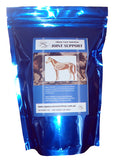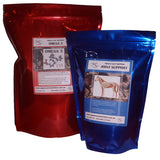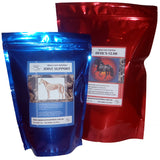3 Big Hitters in the fight against Osteoarthritis
 Osteoarthritis is a chronic condition in which there is progressive degeneration of one or more joints. Symptoms include joint swelling, pain, instability, restrictions in movement and functional impairment. In its mildest form OA will result in time off and reduced performance, and as the disease progresses, retirement as the joint becomes non functional. The disease progresses through a number of phases, characterised by an advancing loss of joint cartilage. Initially the cartilage tries to repair itself, but as the disease progresses the layer of bone beneath the joint cartilage hardens and the amount of space within the joint decreases. In the erosive phase bone cysts form (fluid filled abnormalities in the bone tissue) and the last phase involves remodelling of the bone itself.
Osteoarthritis is a chronic condition in which there is progressive degeneration of one or more joints. Symptoms include joint swelling, pain, instability, restrictions in movement and functional impairment. In its mildest form OA will result in time off and reduced performance, and as the disease progresses, retirement as the joint becomes non functional. The disease progresses through a number of phases, characterised by an advancing loss of joint cartilage. Initially the cartilage tries to repair itself, but as the disease progresses the layer of bone beneath the joint cartilage hardens and the amount of space within the joint decreases. In the erosive phase bone cysts form (fluid filled abnormalities in the bone tissue) and the last phase involves remodelling of the bone itself.
Active performance horses are also at risk of joint damage. The 'microstress' of exercise stimulates adaptive change to develop stronger muscles and connective tissue, but it is a fine line, and too much stress can overwhelm the body's ability to adapt, resulting in inflammation and damage.
But there are steps we can take to help protect the joints of hard working horses and even ease the symptoms of horses suffering from osteoarthritis with three big hitters: glucosamine, chondroitin sulphate and hyaluronic acid. All of these contain compounds that are needed in joint cartilage, and if we can provide the quality raw materials, damaged cartilage is known to be able to regenerate itself, and we can help protect our horses' joints from wear and tear.
Glucosamine
Glucosamine is a precursor for glycosaminoglycans, which are a major component of joint cartilage. Glycosaminoglycans (GAGs) form the background matrix in all types of connective tissue including tendons, ligaments, the sheaths around muscles, as well as joint cartilage. Glucosamine has anti-inflammatory properties 'comparable or superior to that of the known non-steroidal anti-inflammatories' . It can help reduce cartilage destruction in joints affected by osteoarthritis, and can actually help rebuild the damaged cartilage and restore articular function. A human study found that glucosamine significantly improved pain, tenderness, range-of-motion and swelling in patients with arthritis of the knee and further research demonstrated that it can significantly reduce the progression of arthritis in the knee over a three year period .
Chondroitin Sulphate
Chondroitin sulphate is a glycosaminoglycan and one of the major components of cartilage. Its properties are what gives cartilage much of its resistance to compression, and contributes to its water holding capacity. Chondroitin sulphate has anti inflammatory properties, stimulates the synthesis of proteoglycans (needed for collagen, part of the martrix of joint cartilage) and hyaluronic acid, and reduces the effects of other compounds in a damaged joint that would break cartilage down further. Chondroitin sulphate can actually help increase the production of cartilage components after a joint has been damaged .
Interestingly studies have consistently shown that using glucosamine and chondroitin sulphate together give superior results than using either compound alone. A study using rabbits found "The data suggests that the disease-modifying effect of a mixture of glucosamine HCL and chondroitin sulfate was synergistic and superior than either agent alone insofar as stimulating proteoglycan synthesis and retarding the development of cartilage lesions." Three clinical trials using glucosamine and chondroitin sulphate combined have been performed in horses and all reported beneficial effects. One using older horses found significant improvements in range of motion, increased stride length and swing duration after 8 weeks of supplementation.
Hyaluronic Acid
The third of our big hitters is hyaluronic acid, which has been used in the treatment of joint disorders for many years, either by an injection directly into the affected joint, or intravenously for less localised disorders, and now available as an oral supplement. Hyaluronic acid is another glycosaminoglcan, a major component of cartilage and synovial fluid, which lubricates the joints allowing for smooth movement. Hyaluronic acid can help moderate inflammation and can protect against free-radical damage to cells.
These three big hitters, glucosamine, chondroitin sulphate and hyaluronic acid can play an important role in helping to protect the joints of horses in work, providing the raw materials needed for the body to adapt to the stress of exercise, and they can help ease the symptoms and repair some of the damage for horses suffering from osteoarthritis, especially if a programme of supplementation is started in the early stages of the disease. With supplements like these now readily available, we can help give our horses longer working lives and many years of pain free riding together.
|
RELATED PRODUCTS |
|||
 |
 |
 |
 |
| Joint Support |
Joint Builder |
Joint Relief |
Devil's Claw |